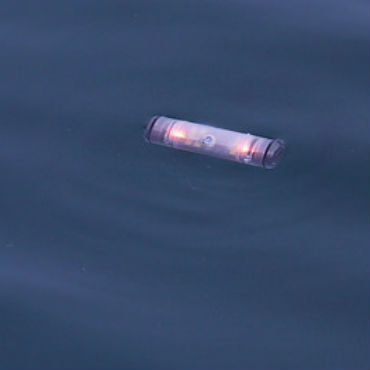Updated fish drone monitors dam dangers

Data gathered by the Sensor Fish could aid in redesigning dams' hydroturbine chambers, where abrupt changes in pressure can kill salmon.

Researchers at the Pacific Northwest National Laboratory have created a synthetic fish that mimics a juvenile salmon and can record a slew of environmental data.
Researchers in the Pacific Northwest have made a new kind of electronic fish that can tell how the region's hydroelectric dams affect the live, scaly counterparts that swim through them.
The Pacific Northwest National Laboratory's latest version of the Sensor Fish is a small tubular device that analyzes the physical stresses fish experience when they swim through hydroelectric structures on rivers.
Millions of salmon must traverse dams in the region every year. Most of those dams were built in the 1970s or earlier and are undergoing relicensing, which requires evaluation and modifications to meet updated environmental laws. Lab officials said the biggest threat to salmon and other fish swimming through the facilities are not the huge spinning blades on hydroturbines but the abrupt pressure changes in hydroturbine chambers. The data generated by the new drone fish could help in redesigning those chambers.
In a paper published in the American Institute of Physics' Review of Scientific Instruments, the lab said its earliest design of the Sensor Fish in the 1990s featured basic circuitry, sensors and two AA batteries stuffed into in a 6-inch-long, fish-shaped piece of clear rubber. Although the rubber-encased critter was fish-like, it couldn't fully match the experience of a live juvenile salmon swimming through dams.
The lab moved on to a more tubular design in 2004. The 2014 version is based on that design: a hollow tube of clear, durable plastic stuffed with various sensors, a circuit board and a miniature rechargeable battery. The current Sensor Fish -- which is 3.5 inches long and 1 inch in diameter and weighs 1.5 ounces -- more closely mimics a juvenile salmon.
The new device is more impressionable than its predecessors. It can record 5 minutes of data in its flash memory, take more than 2,000 measurements per second, and withstand 174 pounds per square inch of pressure and more than 200 times the force of the earth's gravity. It can also record temperatures between -40 and 260 degrees F.
It has a radio transmitter and an automatic retrieval system that floats the device to the surface after a predetermined amount of time.
And it's also cheaper to make than its predecessors, with each synthetic fish costing about $1,200, compared to $5,000 for the 1990s model.
Lab officials said researchers successfully field-tested the new and improved Sensor Fish at two locations in Washington state: Ice Harbor dam on the Snake River and Boundary dam on the Pend Oreille River.


